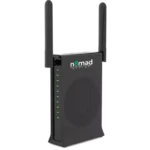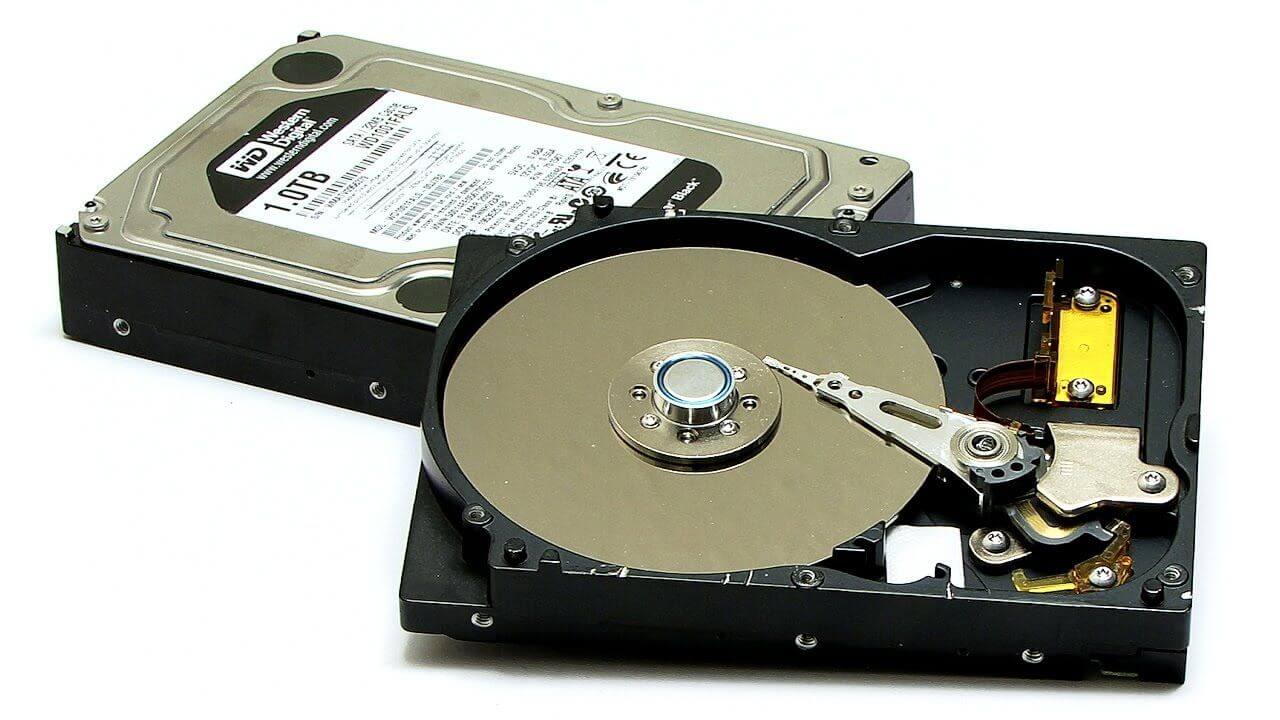
The Hidden River of Data: How Internet Speed Flows Through the Peaks and Valleys of Connectivity
Have you ever wondered why sometimes your favorite show streams without a hitch, and other times it buffers endlessly? Imagine your data as water flowing through a vast mountain river system—the broader and clearer the path, the faster the water moves. But the flow slows when the terrain gets rocky and narrow, just like your internet.
In this article, we’ll use this river to explain the intricacies of internet speed and how companies like Nomad Internet can turn your connection into a fast-flowing digital river, no matter where you are.

Content
The Mountains and Valleys of Connectivity: Understanding Internet Speed
Whenever the internet speed is mentioned, we get it in numbers, which is mbps, but what does it exactly mean? To understand, imagine the internet as a river traveling through mountain terrain. The riverbed represents your connection, and the water is your data. The faster and more open the river, the quicker your data moves.
Wide Rivers (High-Speed Internet)
Think of a large plain with no obstacles stretching across a valley with steep hills. It is significant, comprehensive, and rapid, and there is much space for a large amount of water to flow simultaneously. This is what it is to have a high-speed internet connection. Your data—be it a streaming video, a file download, or an online game–moves seamlessly because there is room to do so.
For example, the fiber-optic internet is the wide river we have compared to the path. High speed is achieved where the data transfers at speeds greater than one thousand Mbps, most of the time with little interference. Currently, you can stream, game, and browse with several devices as you would with a broad, swift river of water.
Narrow Streams (Slow Internet)
Now imagine a narrow, rocky stream weaving through tight mountain passes. The water is still moving, but much more slowly, and only a tiny amount can pass through at a time. This is similar to having a slower internet connection. If, for example, two devices are attempting to access a movie, download a file, or even play a game, then suddenly, everything slows down because the narrow stream (or slow download speed) can’t handle multiple requests simultaneously.
The Water Flow: Data Moving Through Your Internet
Consider the water in these rivers and streams as the data your internet is trying to handle. Just like that passageway fills with water, if there is more water, then necessary, congestion is congestion due to data that a slow Internet connection can process. Here’s how it works:
- Water Flow (Data Transfer): Take, for example, the amount of water (data) that passes through your connection during a particular period as determined by your internet speed. Increased speed means that more information is exchanged, while slower speeds work to hinder this flow, resulting in a lag.
- Flooding (Congestion): If you have too many devices using a slow connection at once—say, someone is streaming a movie, someone else is gaming, and someone is on a video call—the “river” becomes congested. Data gets backed up, which leads to buffering, delays, and frustratingly slow downloads.
Types of Rivers: Comparing Internet Connections
Not all rivers—or internet connections—are created equal. Here’s how different types of internet connections work:
1. Fiber-Optic Internet: The Super Highway River
The superior broadband is the third for internet connection, best illustrated as an immense place containing crystal clear and very fast-flowing water. It presents the virtually unbounded data transmission rate with a mean of above 1000 Megabits per second. It is continuous and seamless, and doing this activity is suitable for those who need high bandwidth internet for activities such as streaming 4K videos, gaming, or using multiple devices.
2. DSL or Cable Internet: The City River
Cable or DSL internet is a medium stream like a river that can transmit a decent amount of information at a point in time, but it has the problem of congestion. It is all right for most families, though it sometimes becomes congested, particularly during peak hours. In the evening, when many are on the net, it becomes slow and full of buffers.
3. Satellite Internet: The Winding Stream
Satellite internet, often used in remote areas, is like a winding, narrow stream that takes time to reach its destination. Although it can work in places where fiber or cable cannot, it’s often slower and more prone to interference, much like a stream trying to flow through a rocky, uneven path.
Managing the Flow: Data Traffic and Internet Speed
A lot can be said about why speeds differ with the volume of data that goes through one’s internet connection. Identical to a river, which relies on the quantity of water flowing through it and any hurdles met along the way, is the internet speed, which relies on the quantity of data and hurdles of the connection.
- High Flow (Heavy Data Usage): Competing multimedia is like trying to run water through the river each time many gadgets are playing, gaming, or downloading large files in one instance. Even the fastest connections can slow down under heavy use, especially if the “river” (your internet connection) is not wide enough.
- Low Flow (Light Data Usage): If only one or two devices use the internet simultaneously, it’s like a gentle stream flowing through a comprehensive channel. Your data can move smoothly and quickly without any delays.
The River’s Condition: Good and Bad Internet Connections
Just like a river’s condition affects how fast water flows, the quality of your internet connection plays a significant role in your internet speed.
Smooth River (Good Connection)
Water flows effortlessly when your river is free of obstacles and has a clear, wide path. This is just like having a perfect internet connection where the preferred parameters, such as the speed, are at the highest level, and it is easy to transfer all the data. Most tasks run smoothly without a hitch, and this can range from streaming videos such as 4K videos, downloading files, playing games, and much more.
Rocky River (Poor Connection)
Here, a river with rocks and other features impedes water in that they slow down the water flow, which leads to delays. Likewise, where the internet connection is either weak or unpredictable, the users experience lagging and stuttering when the network is congested.
Real-World Examples: How Internet Speed Affects Everyday Activities
Now, let’s take a look at how this river applies to real-world internet usage:
1. Streaming a Movie
- Wide River (Fast Internet): If you’re streaming a movie on a high bandwidth, it is just as if you are watching the waterfall without a hitch on a broad and deep stream. The movie is relatively small, so it doesn’t take long to download it to your device. There are no intermissions while watching it in high definition.
- Narrow River (Slow Internet): Watching a movie from a slow internet connection is like trying to squeeze water through the edge of a glass. The video may pause to buffer, the quality might drop, or it could take longer to load.
2. Downloading a Game
- Fast River (Fiber Optic): The easiest way to explain the experience of downloading a game over a fiber optic connection is like watching the water flow in a mighty, swift river. The game may be downloaded quickly, allowing you to play immediately.
- Slow River (DSL or Satellite): Downloading a game is like watching water trickle down a narrow, rocky stream on a slower connection. Depending on the game’s size or the connection’s nature, it might take a few hours or even days.
How Nomad Internet Supercharges Your River of Data
Nomad Internet is like the ultimate river engineer, clearing the obstacles and widening the channels to ensure your data flows smoothly no matter where you live. Specializing in fixed wireless internet, Nomad brings fast, reliable internet to even the most remote locations.
Nomad Internet’s high-speed services are built to create broad, smooth rivers for your data, allowing you to stream, game, and download without frustration with slow connections. With Nomad, even the narrowest, most remote mountain passes can be transformed into fast-flowing rivers of data.
The River of Connectivity
This internet speed is a river that passes through the mountains, and its width, state, and gushing make data get through to you faster. Just like the fast current of a big river letting water flow swiftly, broadband enables the data to pass through freely, while in a slow connection, it is as passing through a narrow stream.
We are seeing players such as Nomad Internet paving the way and paving the most efficient path to guarantee lightning connection wherever that could be. Whether streaming a movie, downloading a game, or browsing the web, there’s nothing like a comprehensive, well-maintained river that will take your data to its intended spot without any hitches.

Alvin Newman is an expert in all things technology. He enjoys writing blogs about how to use the latest software and hardware on the market, while also providing advice for using existing technology more effectively. His favorite pastimes include reading comic books and playing video games.












